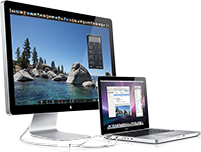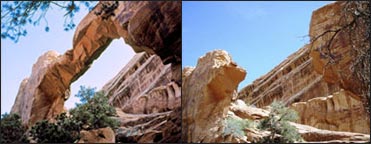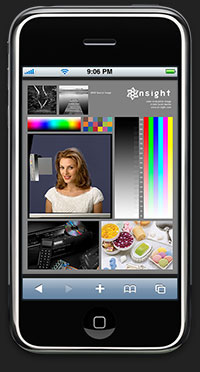Lightroom 3 Process Quality Improvements
 I'm pretty impressed with LR3's new demosiacing, sharpening and noise reduction in LR3's new process rendering. To the right is an image taken at this month's workshop in Mono Lake (larger view). This is a 15 second "star points" exposure taken at 1600 ISO with a 5Dmk2. Below is a side-by-side detail comparison, processed in LR2.5 on the left and LR3b on the right. Click the image below to view at it's full resolution.
I'm pretty impressed with LR3's new demosiacing, sharpening and noise reduction in LR3's new process rendering. To the right is an image taken at this month's workshop in Mono Lake (larger view). This is a 15 second "star points" exposure taken at 1600 ISO with a 5Dmk2. Below is a side-by-side detail comparison, processed in LR2.5 on the left and LR3b on the right. Click the image below to view at it's full resolution.
5Dmark2 - today's best camera for long exposure night photography?
Having used several cameras for a lot of long exposure night photography lately, I think the Canon 5Dmark2 is quite likely the best camera on the market for long exposure night photography right now. Here are some of the highlights: 6400 ISO for testing Being able to take photos at 6400 ISO has huge benefits for the night photographer. Night photographers tend to waste a bunch of time taking long exposures only to discover they need to reshoot with a better exposure. Testing exposures at high ISOs can save huge amounts of time but doing so has been clunky as it requires complicated math when…
Commentary on new MacBooks and Cinema Displays
 The new Apple Cinema Display and MacBooks complete Apple's all-glass, glossy screen approach and signals the end of the matte surface, glare resistant displays that creative professionals have come to know and love over the years.
When asked about the choice to move to all-glossy displays Phil Schiller responded "You offset the reflection…
The new Apple Cinema Display and MacBooks complete Apple's all-glass, glossy screen approach and signals the end of the matte surface, glare resistant displays that creative professionals have come to know and love over the years.
When asked about the choice to move to all-glossy displays Phil Schiller responded "You offset the reflection…
Wall Arch collapses in Arches National Park
 Having just lead a workshop in Arches National Park last December, I'm particularly saddened to hear that Wall Arch collapsed last week. At 33 feet tall and 71 feet across, Wall arch was the 12th largest in the park and took millions of years to form. When humans first inhabited the park 10,000 years ago they gazed upon the same, albeit…
Having just lead a workshop in Arches National Park last December, I'm particularly saddened to hear that Wall Arch collapsed last week. At 33 feet tall and 71 feet across, Wall arch was the 12th largest in the park and took millions of years to form. When humans first inhabited the park 10,000 years ago they gazed upon the same, albeit…
iPhone 3G screen commentary
 I see the new iPhone 3G display has a warmer and more reasonable color temperature of ~6900 Kelvin (K) instead of the original iPhone's ~8300K. Thank goodness. The original device was way too cool, and much cooler than any natural or common artificial lighting. Daylight averages 5000K and interior lighting averages somewhere around 3500K. I wish all digital devices were in the 4000-5000K range. If they were, the viewing experience across devices…
I see the new iPhone 3G display has a warmer and more reasonable color temperature of ~6900 Kelvin (K) instead of the original iPhone's ~8300K. Thank goodness. The original device was way too cool, and much cooler than any natural or common artificial lighting. Daylight averages 5000K and interior lighting averages somewhere around 3500K. I wish all digital devices were in the 4000-5000K range. If they were, the viewing experience across devices…
Miraval avec le Brad et Angelina
 Those of you that have visited the Onsight studio might recognize these photos of Chateau Miraval that have graced the studio walls for the last 10 years. You may also recognize these scenes from the likes of Vanity Fair, People, Us and other magazines and newspapers this week because Angelina Jolie and Brad Pitt just leased the place and the paparazzi are typically all over it. My wife's aunt and uncle have owned Miraval for a couple decades and enjoy the rustic setting where…
Those of you that have visited the Onsight studio might recognize these photos of Chateau Miraval that have graced the studio walls for the last 10 years. You may also recognize these scenes from the likes of Vanity Fair, People, Us and other magazines and newspapers this week because Angelina Jolie and Brad Pitt just leased the place and the paparazzi are typically all over it. My wife's aunt and uncle have owned Miraval for a couple decades and enjoy the rustic setting where…
G7 press calibration call to arms
G7 is a proof-to-print process developed by the IDEAlliance that uses spectrophotometry to calibrate presses by the numbers to specifications like SWOP, GRACoL or FOGRA. Previous press calibration methods relied upon basic densitometry, dot gain and visual analysis and could take days of press runs and tweaking
ProofLine PressWhite offset proofing inkjet paper
 I have searched high and low for an excellent inkjet paper for offset press proofing. Most inkjet papers are designed for maximum gamut and black Dmax rendering. In comparison to what we typically see on press these papers have a much brighter white, a much larger color gamut and a higher, richer, darker DMax. What's worse is that these papers don't feel like offset stock and are typically too glossy or too matte.
I have searched high and low for an excellent inkjet paper for offset press proofing. Most inkjet papers are designed for maximum gamut and black Dmax rendering. In comparison to what we typically see on press these papers have a much brighter white, a much larger color gamut and a higher, richer, darker DMax. What's worse is that these papers don't feel like offset stock and are typically too glossy or too matte.


Dan Burkholder Pioneering iPhone Fine Art Photography
My good friend and mentor Dan Burkholder is boldly blazing a new path in a way that only he can. Dan is shooting exclusively with an iPhone and is making and exhibiting some serious fine art prints from it. Don't laugh - Dan's not just snapping low resolution images and applying filters to them, he's capturing sometimes dozens of frames, stitching them together and using half a dozen applications to develop the images to his liking. His final results are fairly high resolution files that make for nice prints. His images are made and developed completely on the iPhone.![]()